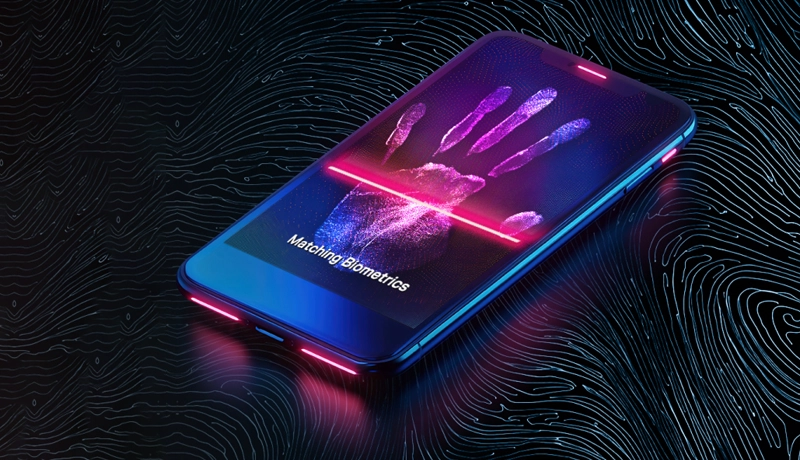Fingerprint
Recognition
Master every print. Match latent fingerprints in seconds, and partial, single, and tenprints in milliseconds.

Lead the way with the gold standard in biometric matching.
Latent Prints
Real-time 1:1 and 1:N latent matching for law enforcement and forensic investigation. Latent prints are friction-ridge impressions of a person’s fingers or palms, left unintentionally at crime scenes. They are often incomplete and invisible to the naked eye.
Tenprints
Standardized tenprint cards ensure detailed ridge patterns and minutiae points are fully captured and searchable. These unique biometric profiles provide unparalleled identity verification for booking, background checks, and ongoing casework.
Palmprints
Expanding on fingerprints, palmprints enrich your identification capabilities. The intricate details of palm structure offer distinguishing biometric minutiae to further identify individuals.
ROC ABIS
Supercharge your biometric identification. ROC ABIS is powered by industry-leading algorithms, streamlined workflows, and highly scalable ROC architecture designed to maximize efficiencies and minimize costs.
Top ranked by NIST.
#
1
#1 global fingerprint recognition provider in combined accuracy and efficiency. Ranked by NIST
#1 most sensor-interoperable algorithm on the planet.
#1 most accurate performance on cross-sensor IARPA Nail-to-Nail evaluation sets.
#1 most efficient algorithm with search speeds 10,000x faster than industry standard.
#1 smallest template size – 160x smaller than the next competitor.
LATENT MATCHING
Pinpoint latent prints in seconds.
Satisfy your need for speed with the world’s fastest latent fingerprint matcher. Transform the future of law enforcement with real-time intelligence, on-the-spot, on-device matching, and rapid response. Because faster fingerprint recognition matters.


2 hrs
Industry Average
42 min
Closest Competitor
USE CASES
Access Control
Modernize Physical Security
Traditional access control methods, such as key cards and PINs, are easily lost, stolen, or shared. ROC fingerprint recognition is the secure, reliable, and user-friendly solution. By verifying individuals via their unique biometric identifiers, you’ll ensure that only authorized personnel gain entry to secure areas.
Banking & Finance
Safeguard Financial Services
In today’s fast-paced world, ROC fingerprint recognition enables global banks and FinTech companies to securely identify customers, prevent fraud, and stay on top of evolving threats. With NIST-ranked biometrics from ROC, financial institutions can conveniently verify users and ensure compliance by adhering to the strictest ethical, regulatory, and data privacy standards.
Identification and Authentication
Empower Digital Lives
Fingerprint biometrics commonly enable access to everything from personal devices to bank accounts. As technology reshapes our daily experiences, ROC fingerprint recognition ensures our data and devices stay safely in our control through frictionless and inclusive identification solutions – unlocked with a simple touch.
Law Enforcement
Advance Public Safety and Trust
The future of law enforcement is built on ROC. Adopted by top law enforcement and government agencies, ROC multimodal biometric and ABIS solutions power time-sensitive, large-scale investigations worldwide. We support community safety and protect our civil rights through American-made, globally trusted biometrics, backed by responsible AI governance, data privacy practices, and algorithms free from racial bias.
Healthcare
Promote Better Health Outcomes
From frictionless visitor management to AI threat detection, Vision AI is playing a larger role in value-based healthcare. ROC fingerprint matching promotes better health outcomes by securing facilities, identifying patients, and streamlining and personalizing care delivery. In medical settings where accuracy is paramount, we ensure the right care reaches the right person at the right time.
Border Control
Secure Borders More Effectively
When it comes to safeguarding our nation’s borders, face recognition and fingerprint matching empowers border control and immigration services to swiftly authenticate travelers, red-flag known individuals on watch lists, and deter unauthorized border crossings. ROC biometric solutions are relied upon by the U.S. military, Department of Defence, and local and state law enforcement.

Deployed by
DOD | DOS | US NAVY | US MARSHALS | FBI
PRODUCTS
The Future of ABIS
Supercharge your biometric
identification with the agile,
affordable, American-made ABIS.
PRODUCTS

The Future of ABIS
Supercharge your biometric
identification with the agile,
affordable, American-made ABIS.

Reimagine What’s Possible
Tap into the power of the all-in-one ROC SDK. Integrate game changing biometric and Vision AI capabilities with just a few lines of code.
WHY ROC
Visionary AI
We build Vision AI into a force multiplier for defense, national security, and digital commerce to augment human capabilities and serve the greater good.
01
Fully multimodal
The most robust biometrics arsenal under the sun. Next-gen Vision AI, ABIS, and video intelligence powered by #1 global NIST-ranked algorithms.
02
Next-gen efficiency
Speed is a financial advantage. Scalable algorithms and modular frameworks reduce costs by simplifying systems, streamlining development, and unleashing peak cloud performance.
03
Highest fidelity
Powerfully lightweight algorithms built on massive datasets for precision applications with near zero bias. Optimized for mobile and edge. Deployed with a few lines of code.
04
Easy to work with
Focus on innovation, not integration. With personalized support, flexible pricing, and cross-platform interoperability, ROC SDK has everything you need to ship with confidence.
The future of
fingerprint is
American.
Build with ROC.
Schedule a free trial or demo.
FREQUENTLY ASKED QUESTIONS
How does ROC Fingerprint Recognition SDK work?
ROC Fingerprint Recognition SDK is a cutting-edge software development kit that provides advanced fingerprint recognition capabilities for a wide range of applications. It offers developers a powerful toolkit to integrate highly accurate and efficient fingerprint recognition technology into their systems.
What makes ROC SDK Fingerprint Recognition the best solution?
ROC SDK Fingerprint Recognition leads the industry in speed, accuracy, and scalability. Our algorithm has been meticulously developed and optimized to deliver lightning-fast fingerprint matching without compromising on accuracy, ensuring reliable and secure authentication.
How accurate is ROC Fingerprint Recognition SDK?
Our Fingerprint Recognition SDK achieves best-in-class accuracy. Leveraging state-of-the-art algorithms and machine learning techniques, our SDK achieves outstanding match rates, minimizing false positives and false negatives. This ensures that only authorized individuals are granted access, providing enhanced security and peace of mind.
Why is fingerprint recognition system a reliable biometric trait?
Fingerprint recognition has a substantial history and is recognized as the most trusted biometric from an automated biometric perspective. It has been extensively used by nearly every country in the world for critical identification infrastructure tasks.
How has ROC overcome legacy constraints in fingerprint recognition?
Fingerprint recognition algorithms have historically suffered from slow comparison speeds due to treating fingerprint matching as a point-set matching problem, considering minutiae location, orientation, and type as the points.
With the release of the ROC SDK v2.4, we have overcome these challenges leveraging many of the same proprietary techniques deployed in our industry-leading face recognition technology.
What are the key advantages for using the ROC SDK fingerprint recognition algorithm?
Our fingerprint algorithm delivers best-in-class accuracy and operates with unprecedented efficiency, setting new standards for the scalability of fingerprint systems.
Has your fingerprint recognition software performance been evaluated by an unbiased third party?
The National Institute of Standards in Technology (NIST) PFT III benchmark shows that the ROC SDK fingerprint algorithm ranks as the number one performer in Nail-to-Nail benchmarks, achieving high rankings in various sensor categories, and offers the lowest mean error rate across all sensors.
What makes ROC Fingerprint Recognition SDK scalable?
ROC Fingerprint Recognition SDK is designed to scale seamlessly across a wide range of deployments, from small-scale applications to enterprise-level systems. Our SDK is optimized to handle high volumes of fingerprint data efficiently, enabling rapid identification and authentication even in scenarios with a large user base.
How is AI fingerprint recognition used?
ROC Recognition SDK supports applications across various industries, including:
Access control and physical security
- Law enforcement and forensic analysis
- Identity verification and authentication
- Time and attendance management
- Mobile device security and unlocking
Which development platforms is ROC Fingerprint Recognition SDK compatible with?
ROC Fingerprint Recognition SDK is designed to be highly compatible with popular development platforms, making integration seamless and hassle-free. Whether you are developing applications for Windows, macOS, Linux, Android, or iOS, our SDK provides comprehensive support and documentation to facilitate easy implementation.
Does ROC provide technical support for its Fingerprint Recognition SDK?
Absolutely! We are dedicated to providing exceptional technical support to our clients. Our team of experienced engineers is readily available to assist with any questions or concerns regarding the integration, optimization, or troubleshooting of our Fingerprint Recognition SDK. We are committed to ensuring a smooth and successful implementation process for all our clients.
